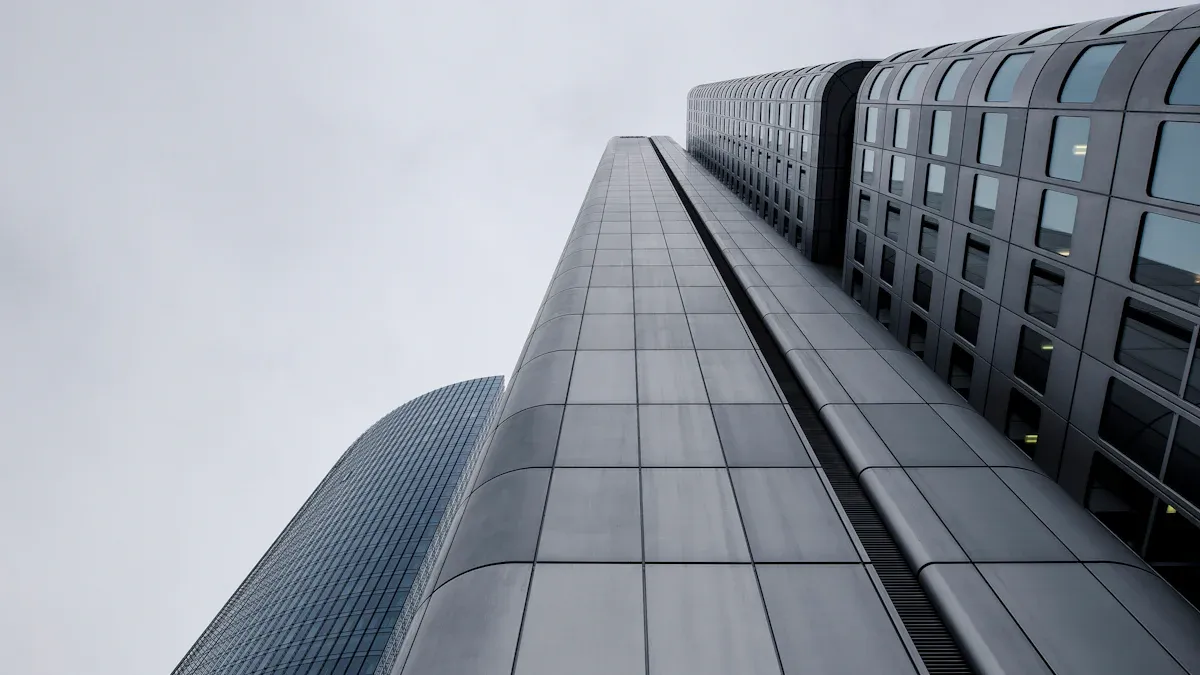
12 Aug How to Choose the Right Aluminum Composite Material for Your Project in 2025
Table of Contents
- 1 Key Takeaways
- 2 Aluminum Composite Material Basics
- 3 Choosing the Right Aluminum Composite Panel
- 4 Selecting ACM: Supplier and Quality
- 5 2025 Trends in Aluminum Composite Panels
- 6 Practical Tips for Choosing the Right Aluminum Panels
- 7 FAQ
- 7.1 What are the main applications for aluminum composite material panels?
- 7.2 How do I start choosing the right aluminum composite panel for my project?
- 7.3 What things should I consider before choosing aluminum composite material?
- 7.4 Are aluminum composite metal panels good for facade cladding?
- 7.5 What makes aluminium composite sheets easy to install?
When you begin a new project, you must pick the right material. The material should fit what your project needs. Aluminum composite material, called ACM, is special for many reasons. Many architects and builders like ACM. They choose it because it is light, strong, and does not rust or get damaged by weather. You can pick from many finishes and textures. This gives you more ways to design your project. ACM also saves money, does not catch fire easily, and helps save energy. These things make it a good choice for new buildings. Before you pick ACM, think about some important things. Look at the thickness, the core, and if the supplier is reliable. These things help you get the best results. You may want your project to last long, be easy to build, or look special. If you know about ACM and its properties, you can pick the best aluminum composite material for your project.
Key Takeaways
Aluminum composite material (ACM) is light and strong. It does not get damaged by weather. It is easy to shape. This makes it great for many building and design jobs.
Pick ACM panels that fit your project needs. Think about where you will use them. Check fire safety, thickness, core type, and weather. This helps make sure they last long and are safe.
Choose finishes and coatings like PVDF or nano-coatings. These protect panels from sun, rain, and scratches. They help the panels look new for many years.
Work with trusted suppliers who sell good products. They should give good help and have the right certifications. This helps you avoid problems and get the best panels.
New ACM trends use eco-friendly materials and digital printing. They also have flexible designs. These help save energy and let you build creative, modern things.
Aluminum Composite Material Basics
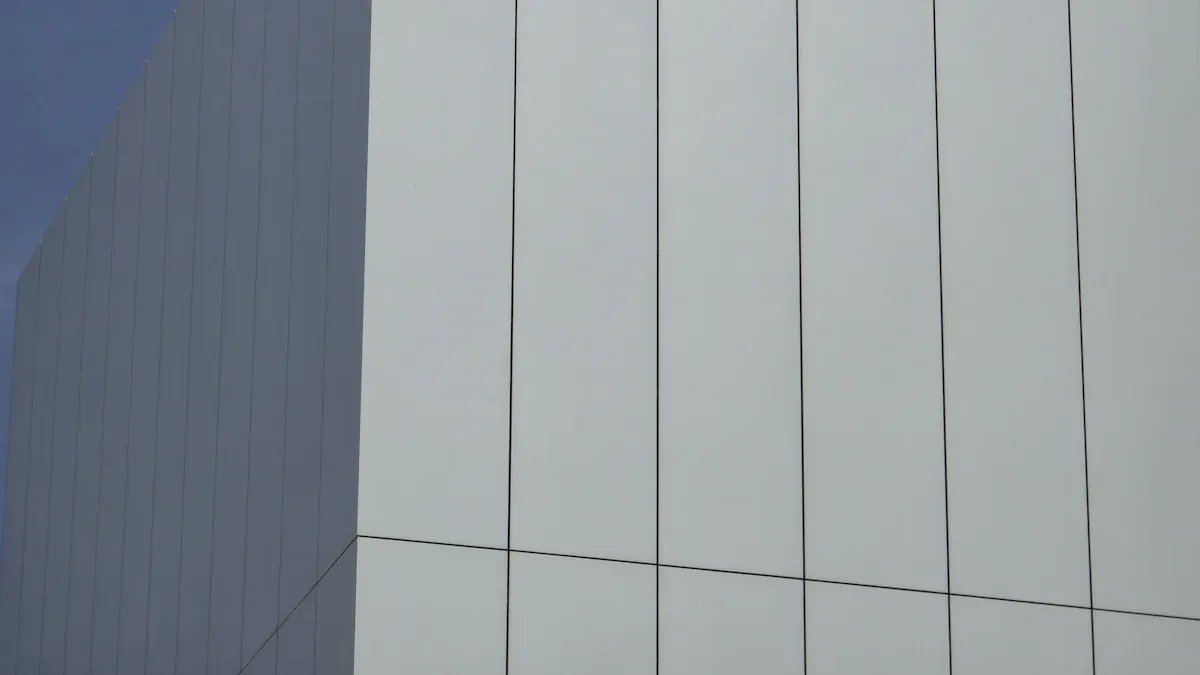
What Is Aluminum Composite Material?
Aluminum composite material, or acm, is used in many projects. It has a special design with two thin aluminum sheets on the outside. There is a core in the middle. The core can be solid polyethylene or mixed plastics. This makes acm light, strong, and simple to shape. You can see its parts and features in the table below:
Component | Description/Specification |
|---|---|
Structure | Three-layer sandwich panel |
Outer Layers | Two pre-painted aluminum sheets |
Core | Polyethylene (PE) or blends |
Typical Thickness Range | |
Aluminum Sheet Thickness | About 0.012 inches each |
Characteristics | Lightweight, rigid, easy to fabricate |
Aluminum composite material panels are easy to cut and put in place. You can use them for many things.
Types of Aluminum Composite Panels
There are different types of aluminum cladding panels. They have different cores and finishes. The two main types are PE core panels and FR core panels. PE core panels use thermoplastic polyethylene. These are good for inside spaces or short buildings. FR core panels have a mineral-filled core. They are better at stopping fires and are used for tall buildings or places where safety is important.
You can pick from many finishes for aluminum composite panels. PE finishes are best for inside. PVDF finishes are stronger and last longer outside. Some panels have nano coatings. These help keep them clean and dry. The table below shows the main types and how they are used:
Category | Core Material | Finish/Coating Type | Properties and Applications |
|---|---|---|---|
PE Core Panels | Thermoplastic polyethylene (PE) | PE finish | Good for interiors and low-rise buildings; not fire rated. |
FR Core Panels | Mineral-filled thermoplastic | PVDF or Nano coatings | Fire-resistant; best for exterior cladding and high-rise buildings. |
PE Finish | N/A | PE coating | For indoor use; less durable. |
PVDF Finish | N/A | PVDF coating | Strong, weather-resistant; ideal for outdoor and facade cladding. |
Nano Coating | N/A | Nano coatings | Easy to clean; water-repellent. |
Common Applications
Aluminum composite panels can be used in many ways. Here are some common uses:
Outside building walls and curtain walls for offices, hotels, airports, and factories. These panels are light and help stop rust and fire.
Inside decoration in malls, hospitals, and elevators. You can use aluminum composite material panels for walls, ceilings, and busy areas.
Outdoor ads and signs. Aluminum composite metal panels are good for shop signs, billboards, and displays. They are easy to shape and last a long time.
Furniture and home decoration. You can use aluminum composite sheets for cabinet doors, closets, and wall backgrounds. Many people like wood or stone looks.
Tip: You can use aluminum composite panel sheets for both inside and outside projects. These panels give you many ways to design and help your project last longer.
You will see acm, aluminum composite metal panels, and aluminum cladding panels in many fields. They are flexible, strong, and look modern for any wall or sign project. When you pick the right aluminum cladding panels, you can meet your design and safety needs easily. Aluminum composite panels and aluminum composite material panels are top picks for architects and builders who want strong, light, and nice-looking composite materials.
Choosing the Right Aluminum Composite Panel
 Project Needs and Requirements
Project Needs and Requirements
To pick the best acm, you need to know your project. Every project is different. It depends on where it is and what you want it to look like. Ask yourself some questions first. What will you use the panels for? Will they be outside or inside? What kind of weather will they face? Do you want them to look a certain way? Do you need special safety labels?
You should also think about other things. How strong do the panels need to be? Will they bend or break easily? Are they heavy or light? Will they get bigger or smaller with heat? Can they handle rain, sun, or rust? Do you need them to stop fires? How will you put them up? Will water get in or will they fall off? Do they follow the rules for buildings? Are they safe for fire? Do they hurt the environment? How much energy do they use? Is it easy to throw them away? Have they been tested for safety? Are they a good deal for the price? Will they last a long time? Are they easy to cut and put up? Can you make them fit your design?
Tip: Know what you need before you start. This helps you pick the right panels and makes your project work better.
If you follow a plan, you can find the best panels. You can check what your project needs, like heat or chemicals. Then you can see which acm fits best. This way, you get panels that work for your project.
Environmental Challenges | Suitable ACM Properties and Considerations | |
|---|---|---|
Coastal | High humidity, salt air | Protective coatings, corrosion resistance |
Urban | Pollution, stress | Durable coatings, lightweight, easy to clean |
Industrial | Chemical exposure | Protective finishes, corrosion resistance |
Desert | Heat, UV radiation | UV-resistant coatings, heat dissipation |
Panel Thickness and Core Material
The thickness and core are important when picking panels. Most panels are between 3mm and 6mm thick. Each size is good for different jobs.
Thickness | Typical Applications | Performance and Safety Impact |
|---|---|---|
3mm | Signage, interior applications | Lightweight and flexible; easy to install; PE core is common, offering basic fire resistance. |
4mm | Exterior cladding | Balanced durability and weight; suitable for most exterior uses; fire-retardant (FR) cores available for safety. |
6mm | High-rise, large-scale projects | Maximum strength and insulation; often uses mineral-filled FR cores for enhanced fire resistance and safety. |
The core changes how safe and strong the panel is. PE cores are light and cheap but only stop small fires. FR cores are better for fire safety. They are needed for tall buildings. The core also helps keep heat and sound out. Thicker cores are better for this. But they may need stronger support and cost more to put up.
Note: Fire safety depends on the core, not the thickness. Always check the rules for fire safety in your area.
Pick the right panel by matching the thickness and core to your needs. Use 3mm for signs inside. Use 6mm with FR cores for tall buildings.
Durability and Weather Resistance
Many people pick these panels because they last a long time. They do not rust or fade in the sun. They do not soak up water. Special coatings like PVDF or polyester protect the panels from bad weather. This makes acm good for outside use.
Test Method | Performance / Rating | |
|---|---|---|
Water Vapor Resistance | – | Resistance factor over 100,000 |
Water Absorption | ASTM D 570 | Maximum 3% after 8 days |
Fire Safety | UL-94 | V1 rating (flame retardant) |
Fire Safety | BS EN 13501-1:2018 | A2-s1 d0 rating (non-combustible, low smoke) |
Tensile Strength | ASTM D 638 | 30 to 58 N/mm² |
Peel Strength (Adhesion) | ASTM D 903 | Up to 12.00 N/mm² at 180° angle |
Thermal Resistance | ASTM C 518 | 0.071 m²·K/W |
These panels work well in hot, cold, or wet places. They do not swell in wet air. They do not lose color in the sun. They do not crack in the cold. In salty places, special coatings stop rust. In windy places, the panels stay strong and do not break.
Callout: Sherabond ACP panels keep their color and shape from -40°C to 80°C. They help save money on repairs and make buildings last longer.
Aesthetics and Finishes
How the panels look is important too. You can pick many colors and finishes. PVDF finishes are best for outside. They keep the panels safe from sun and rain. Polyester finishes cost less and are good for inside. Oxide films stop rust and make the panels tough. Laminating makes them shiny and hard to scratch.
Description and Impact on Appearance and Maintenance | |
|---|---|
PVDF | Durable for outdoor use; protects against weather |
Polyester | Cost-effective; best for interiors |
Oxide Film | Rust-resistant; extends lifespan |
Laminating | Adds shine and scratch resistance |
You can pick colors like white, black, red, blue, or green. You can choose shiny, dull, brushed, or mirror looks. Special coatings stop scratches and fading. The panels can look new for up to 25 years.
Tip: Clean the panels once or twice a year with mild soap. Do not use strong cleaners. This keeps them looking nice.
Installation and Compatibility
Putting up the panels the right way is very important. There are many ways to install them:
Wet Sealant Joint: Keeps water out for outside walls.
Hanging Method: Lets the panels move with heat; good for inside.
Dry Gasket Joint: Stops stains with gaskets.
Narrow Open Joint: Good for panels that look like stone or wood.
Riveting: Fast and strong for big or curved walls.
Pasting: Light and cheap for simple jobs.
Follow the rules for putting up the panels. Make sure water cannot get in. Let the panels move if they get hot or cold. Use strong fasteners. Line up the panels right and keep them safe from weather. If the panels work well with other building parts, you can finish faster and spend less. Some systems let you cut and fit panels at the site. This helps with windows, corners, and other shapes.
Note: Always check how to install the panels for your job. Pick the best way so your panels stay safe and look good for a long time.
Think about how you will put up the panels before you start. Light panels and easy ways to install help you finish faster and save money. If you follow the rules, your panels will look good and work well.
Selecting ACM: Supplier and Quality
 Supplier Reputation
Supplier Reputation
When you pick acm, check if the supplier is trusted. A good supplier helps you avoid trouble and get good panels. Look for these signs to know if a supplier is reliable:
Has important certificates like ISO 9001.
Can show where materials come from and checks quality often.
Answers your questions fast, usually in a few hours.
Sends orders on time most of the time.
Gets good reviews and many people buy again.
Helps with design and can make special panels.
Lets you visit or gives reports from outside checks.
Tip: Ask for samples and check papers before you buy. Reviews and stories from other buyers show how the supplier works on real jobs.
Product Range and Support
A good supplier gives you lots of choices. You can get acm panels in many sizes, thicknesses, colors, and finishes. Top suppliers offer:
Sheet sizes from 48″ x 96″ up to 60″ x 120″.
Thickness from 2 mm to 6 mm.
Many colors like white, black, red, blue, and metallic.
Surfaces like shiny, dull, brushed, or mirror.
Grades for cheap, strong, light, or fire-safe needs.
Special sizes and colors if you ask for them.
You also get help from experts. They help you pick panels, answer questions, and give tips for putting them up. Some suppliers send panels fast, give warranties, and help cut or shape panels for your job.
Feature | What to Look For |
|---|---|
Product Variety | Many sizes, colors, finishes, and grades |
Customization | Custom sizes and colors available |
Technical Support | Expert advice and project consultation |
Delivery | Fast shipping and reliable timelines |
Compliance and Standards
You must make sure your acm panels follow safety and green rules. In the US, panels must pass tough fire tests like NFPA 285 for tall buildings. In Europe, panels must be safe from fire and good for the planet. Many jobs now want panels that can be recycled and do not pollute much.
Rules are different in each place. In Europe, new laws and supply problems can change what you pick. In Asia, some panels have smart things like solar coatings. The US has hard steps for approval, so you need a supplier who knows these rules.
Note: Always check if your supplier’s panels have the right papers for your area. This keeps your project safe and follows the law.
If you pick acm from a trusted supplier with many choices and good rules, your project will go well.
2025 Trends in Aluminum Composite Panels
New Features and Technologies
In 2025, aluminum composite panels have many new features. These panels now use special nano-coatings. Nano-coatings help stop scratches, sun damage, and rust. This makes the panels last longer and need less cleaning. Some panels are lighter but still very strong. You can carry and install them easily. This saves time and money. Fire-resistant and weatherproof panels help keep buildings safe. Digital printing lets you put pictures or patterns on the panels. You can use these panels in smart city projects and modular buildings. New 3D shapes and curved panels give you more design choices.
Eco-friendly materials like recycled aluminum help green building.
Nano-coatings make panels last longer and need less care.
Light, strong panels are easier to put up.
Fire-resistant cores make buildings safer.
Digital printing lets you make custom designs.
Panels work well in green energy and modular buildings.
3D shapes give you more ways to design.
Tip: Ask your supplier about new features to get the best panels for your project.
Sustainability and Eco-Friendly Options
Sustainability is very important for aluminum composite panels now. Many panels use recycled aluminum and polyethylene. This helps protect the environment. You can recycle these panels when you do not need them anymore. This means less trash in landfills. Aluminum composite panels also help save energy. They keep buildings cool in summer and warm in winter. This means you use less heating and cooling. You can look for panels with green certificates like LEED. These show the panels are good for the environment. Picking panels from suppliers who use recycled materials helps your green goals.
Panels can be recycled and save energy.
Using recycled aluminum lowers pollution.
Panels help control heat and save energy.
Less care and longer life mean fewer replacements.
Green certificates show the panels are eco-friendly.
Note: Aluminum composite panels are better for the planet than many other building materials.
Customization and Design Flexibility
You can now customize aluminum composite panels in many ways. You can pick from lots of colors, textures, and finishes. Matte, shiny, metallic, and wood grain looks fit any style. Digital printing lets you add logos or special patterns. The panels are light and easy to shape. You can make curved walls or special designs for inside and outside. Modular designs make it easy to change or update panels later. Smart panels and built-in systems give you more control over your building’s look and use.
Customization Option | Benefit |
|---|---|
Wide color range | Matches any design |
Digital printing | Adds logos or images |
Flexible shapes | Supports creative architecture |
Modular design | Easy updates and replacements |
Block Quote: Aluminum composite panels help you use your creative ideas and keep your project strong and modern.
Practical Tips for Choosing the Right Aluminum Panels
 Consulting Professionals
Consulting Professionals
When you pick aluminum panels, talk to experts first. Experts help you avoid mistakes and get good results. Here are some steps you can follow: 1. Work with certified fabricators who know the rules. 2. Check if the panels pass air, water, and strength tests. 3. Ask about how flat and smooth the panels look. 4. Make sure the design lets panels move when hot or cold. 5. Set rules for how tough the finish should be. 6. Plan how to clean and care for the panels. 7. Use special tools like CNC cutting for cool shapes. 8. Ask for checks and early reports to stop delays. 9. Get drawings and math from your fabricator.
Tip: Experts help you match safety, looks, and how well the panels work.
Comparing Materials
You should compare different aluminum composite materials before you choose. Look at these things: – Brightness and color: Bright panels make colors stand out. – Liner removal: Easy liners save time when you put up panels. – Print quality: Good panels hold ink for signs and art. – Paint and bonding: Strong paint keeps panels from peeling. – Choices: Pick from many sizes, thicknesses, and finishes. – Warranty: A good warranty means the maker trusts their panels. – Appearance: These panels look flatter than solid aluminum. – Weight and cost: They are lighter and cost less than solid metal. – Supplier: Pick a supplier with lots of choices and good help. – Services: Some suppliers cut panels for you or ship fast.
Comparison Factor | Why It Matters |
|---|---|
Brightness | Better color and light reflection |
Printability | Sharp images for signs |
Bonding strength | Lasts longer, less warping |
Product variety | Fits more project types |
Warranty | Shows quality and trust |
Ensuring Best Fit
To make sure your panels fit, follow these steps: 1. Think about where you will use the panels, like walls or signs. 2. Check the weather and safety needs, like sun or fire. 3. Balance your budget with how long the panels last. 4. Pick finishes that look nice and protect from weather. 5. Measure and cut panels carefully so they fit right. 6. Choose the best way to put up the panels, like screws or glue. 7. Clean and check the panels often to keep them looking new. 8. Always use safety gear and follow the maker’s rules.
Note: Good planning and careful work help your panels last longer and look great.
Choosing the right aluminum composite material helps your project succeed. You should match the panel’s properties to your needs. Look for quality assurance, a wide product range, and strong customer support.
ACM gives you a strong but light option for many designs.
The panels resist weather, corrosion, and UV rays, so they last longer.
You can pick from many colors and finishes for the look you want.
ACM supports green building and saves money over time.
Talk to experts and follow the steps in this guide for the best results.
FAQ
What are the main applications for aluminum composite material panels?
You can use aluminum composite material panels for many things. They work for building cladding, facade cladding, signage, and inside decoration. These panels are good for both inside and outside jobs. Many architects pick them because they are light and strong.
How do I start choosing the right aluminum composite panel for my project?
Start by writing down what your project needs. Think about where you want to use the panels and how you want them to look. Look at the types of aluminum cladding panels and see how they are different. Always check how to install aluminum composite panels before you choose.
What things should I consider before choosing aluminum composite material?
Look at the properties, how long the panels last, and if they are good for the planet. Make sure the panels fit how you want to put them up. Check if the supplier has the right thickness and finish for you. Reading the aluminum composite panel details helps you pick the best one.
Are aluminum composite metal panels good for facade cladding?
Yes, aluminum composite metal panels are great for facade cladding. They are strong and let you pick different looks. These panels do not get damaged by weather and keep their color. You can also shape them for cool designs.
What makes aluminium composite sheets easy to install?
Aluminium composite sheets are light and easy to move. You can cut and shape them with simple tools. Follow the rules for putting them up and use the right fasteners. If you plan well, you can put them up quickly and safely.
Tip: Always read the manufacturer’s rules for installing aluminum composite panels so you do not make mistakes.

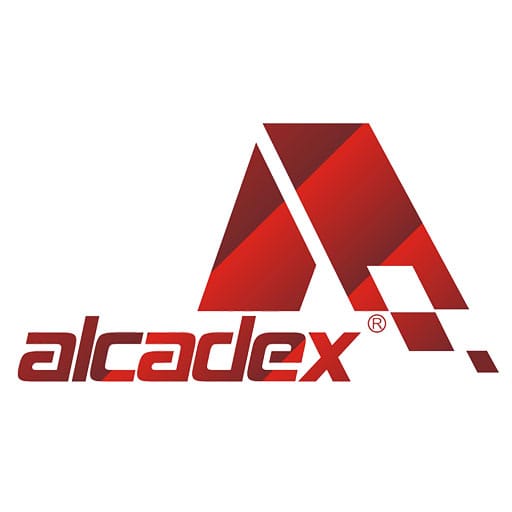

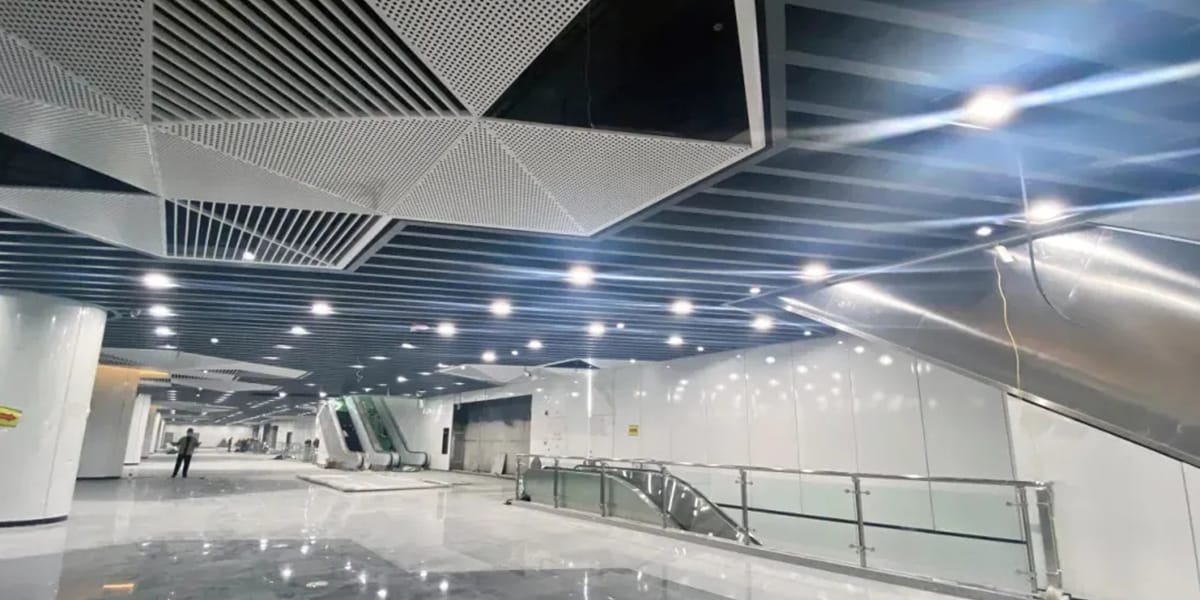 Project Needs and Requirements
Project Needs and Requirements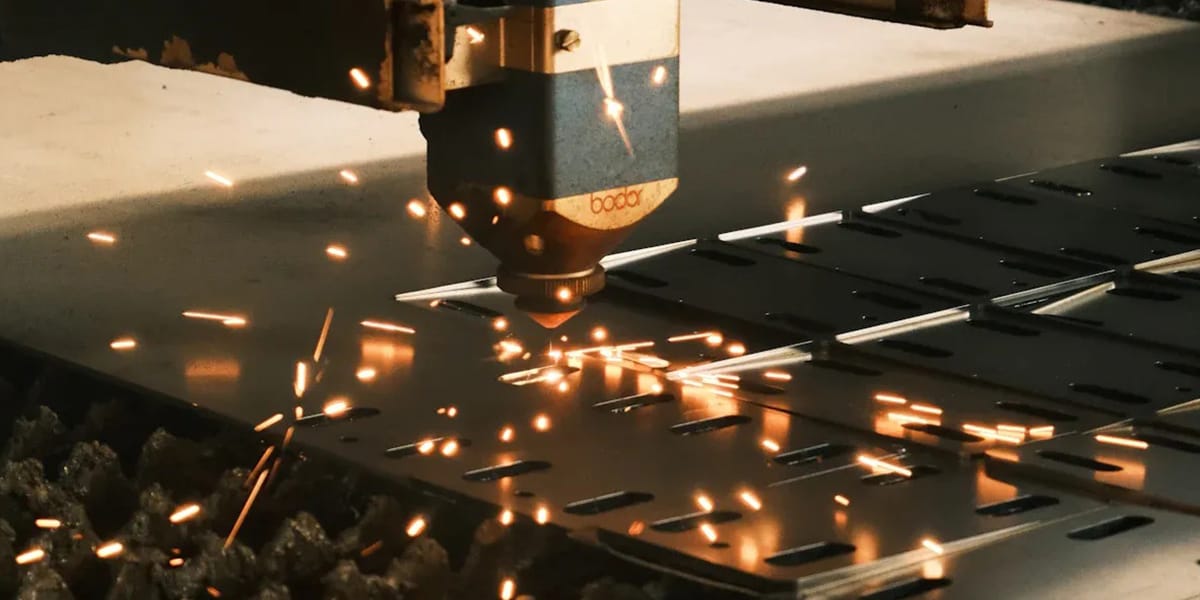 Supplier Reputation
Supplier Reputation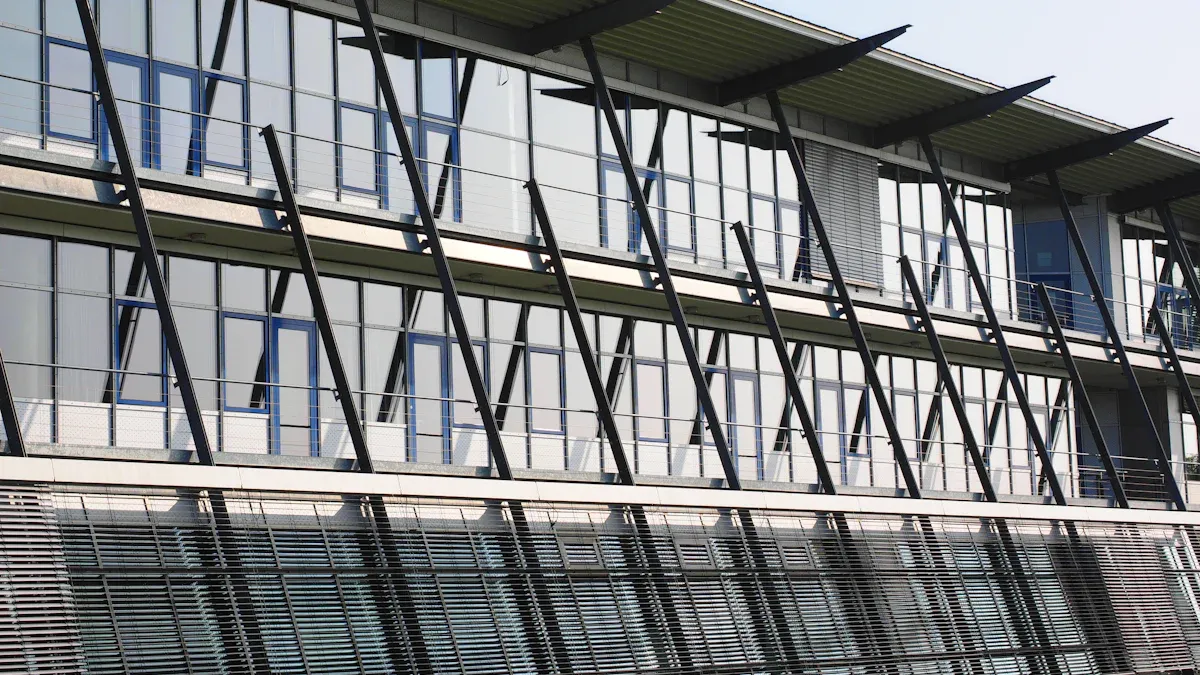 Consulting Professionals
Consulting Professionals